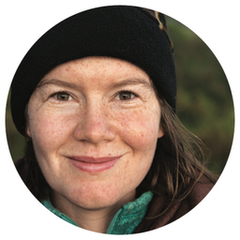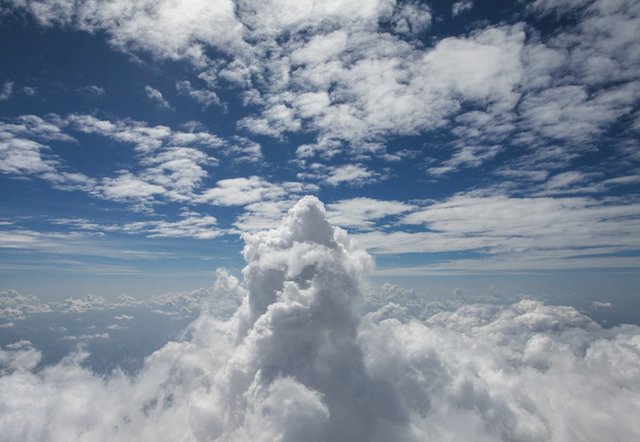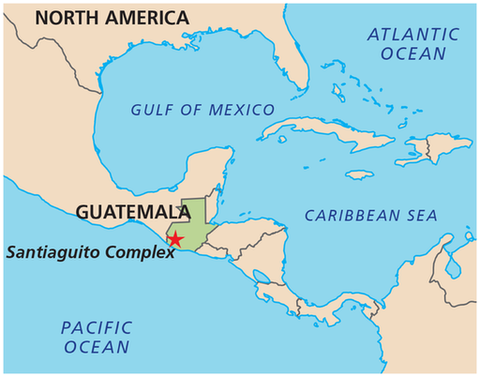
Stephanie Grocke
Volcanologist

Gabby Salazar
Photographer

Ross Donihue
Cartographer
TheyallattendedameetingofscientistsandadventurersatNationalGeographicheadquartersnearlythreeyearsago.IttookonlyafewminutesforvolcanologistStephanieGrocketorealizethatphotographerGabbySalazarandcartographerRossDonihuewouldmakeperfectpartners.GrockewantedtotellthestoryofavolcanicsystemshehadbeenstudyinginGuatemala.AndittookonlyafewminutesforSalazarandDonihuetoknowthattheywere hooked.
AnExplosiveStart
There’samysteryGrockewantstohelpsolve,sheexplained.AtthebaseoftheSantaMaríavolcanoinGuatemalaisanareawhereseveraldomesoflavahave formed.
In1902,SantaMaríaexperiencedahugeeruption.Itrankedasoneofthelargestvolcaniceruptionsofthe20th century.
Theeventdestroyedthesurroundinglandscapeandleftahugecraterinthesideofthemountain.Italsodepositedathicklayerofashandvolcanicdebris.NewlavaflowsbeganeruptingatthebaseofSantaMaríain1922.Overtime,theflowinglavacreatedanentirelavadomecomplex.Itiscalled Santiaguito.

Eruptionsexpelpumice,alightandporousvolcanic rock.

Aplumeofashfroman eruptionrisesabovethe clouds.
Lavadomesareformedwhenstickymagmaeruptsfrom a vent.ItthenpoursontoEarth’ssurface.Thelavaistoothickandgooeytoflowfar.Instead,itpilesupandmakesalarge dome.
ThefirstdometoformwascalledCaliente.Magmathencreatedasecondlavadome,LaMitad.ThemagmamovedwestagaintobuildElMonjeandthenEl Brujo.Finally,themagmamovedbacktoEl Caliente,whereitiscurrently erupting.
APlacetoStudy
Since1922,therehavebeensmall,continuouseruptionsamongthefourlavadomes.Theeruptionshappensooften,theyfeelroutinetothoselivingnearby.TheresidentsinthetownofQuetzaltenangohaveputupwithitforthelast96 years.
ToGrocke,thisplaceistheperfectplacetobe.It’sanaturallaboratoryforstudyingactivevolcanoes.Andit’sagoodplacetotestanewmethodtomonitorlavadome activity.
So,sheplannedamonth‑longexpeditionwithSalazarandDonihue.Grockewantedtousecutting‑edgephotogrammetrytechniquestostudytheactivelavadome.Thisisatypeoftime‑lapsephotography.Itallowsyoutoobservechangesoveraperiodoftime.SheknewSalazarcouldhelpwiththisandalsofilmeruptionsasthey happened.
Donihuewouldmaptheirexpedition.Hewouldalsomakeinfographicstoshowcasethecomplexityandrisksofactivevolcanoes.WithGrocke’svolcanicknow‑how,Salazar’shigh‑techphotography,andDonihue’sadvancedmappingskills,theteamwas ready.
SantiaguitoComplex
The1902eruptionofSantaMaríaproducedahugecrater.Overtime,fourlavadomesformedatits base.
seismicmonitoring station
Santa María
El Caliente
La Mitad
El Monje
El Brujo
GULFOF MEXICO
ATLANTIC
OCEAN
NORTH AMERICA
GUATEMALA
Santiaguito Complex
CARIBBEAN SEA
PACIFIC
OCEAN
SOUTHAMERICA
